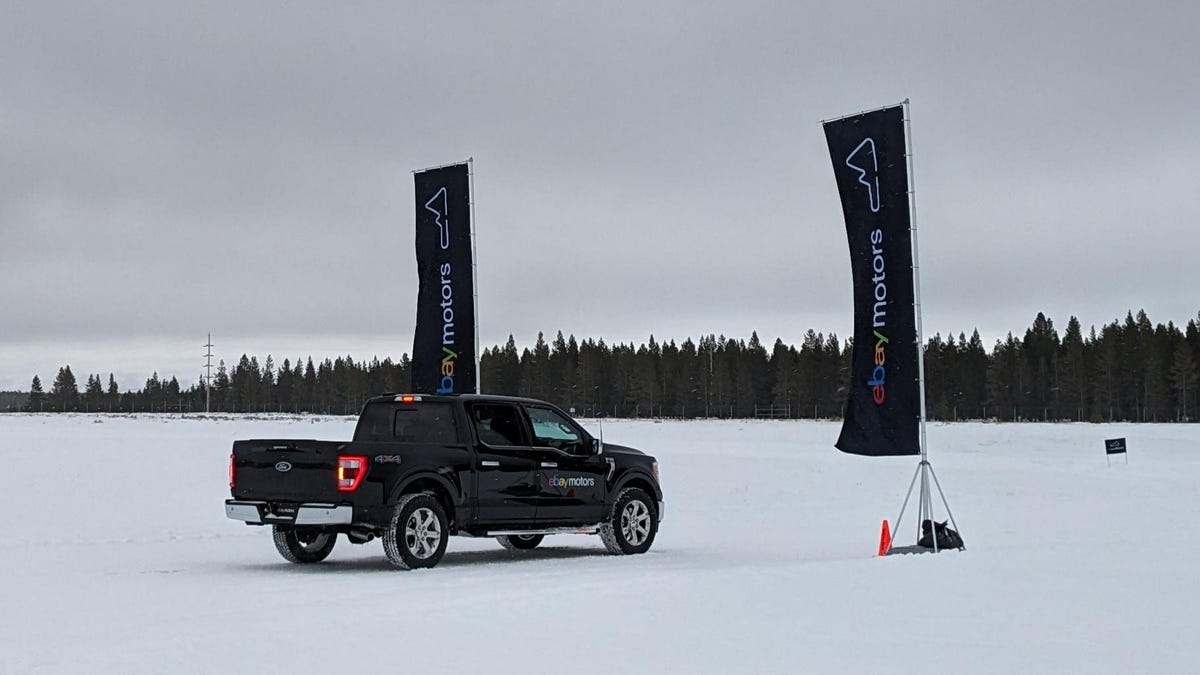I recently returned from a trip to snowy Montana where I had the privilege of driving several different vehicles on both regular tires and dedicated winter tires. Obviously, since we were driving on snow, the winter tires performed significantly better than the all-seasons or summer tires used on the control vehicles. That wasn’t really ever a question. One particular test really stood out to me, though, and that was the one where we drove a Ford F-150 on regular tires on a snowcross course with 600 pounds added to the bed.
“Just toss some extra weight in your trunk or bed, and your [rear-wheel-drive-based vehicle] will be fine in the snow” is pretty common advice. And I will admit, when driving the weighed-down F-150, I didn’t necessarily have any issues controlling it. Whether it was stability control, the weight in the bed or the combination of the two, while the tail was happy to slide, it wasn’t so tail-happy that I ever worried I was going to lose control.
That said, the extra weight in the bed was extremely obvious every time I tried to change directions. The bigger problem, though, was that it wasn’t a disaster on the course, it was extremely slow. Even if I had been able to accelerate more quickly, I would have still had to limit my speed to make sure I had plenty of time to brake.
After all, the last thing I wanted to do was fly off the course and get stuck in the snow in the middle of a freezing Montana winter. And while having an extra 600 pounds in the bed may have made it easier to accelerate, it increased the mass that the brakes had to slow down without doing much to help increase the amount of grip that the front tires had.
Now, in an emergency situation, that’s probably good to know. As long as you take it slow, adding more weight over the rear wheels may be helpful. At least as long as this emergency happens while you’re in a convenient location that has an abundance of sand or large rocks. If a bunch of tubs full of sand in the bed is your actual plan for winter driving, though, you’re going to want to seriously rethink just going ahead and buying a set of winter tires.
As long as you have somewhere to store them in the spring and summer, there’s just no beating winter tires in low-grip situations. When I switched over to the F-150 on winter tires, it was almost like driving a completely different vehicle. I could accelerate much more quickly and was able to actually drive faster because braking performance was so much better. I was also able to take corners at significantly higher speeds because the lateral grip was also superior.
Of course, winter tires don’t make you Superman, and you can still crash if you drive too fast for the conditions. There are also large parts of the country where it’s never going to stay cold enough for long enough that it makes sense to pony up for a second set of tires. Still, if you do live in a place that experiences actual winter, from a safety perspective, I just can’t sign off on adding weight to your trunk or bed like it’s some sort of physics hack.
It’s certainly not the worst thing you could do to prepare for winter, but especially if you’re in an area where snow regularly accumulates on the roads before the plows can get to it, winter tires really are the answer. Yeah, they may cost you a nice chunk of change, but it’s gotta be worth it to lower your risk of a wreck.

